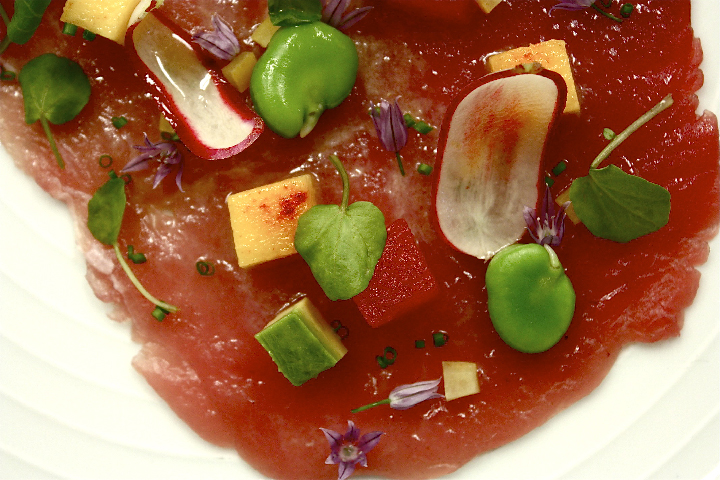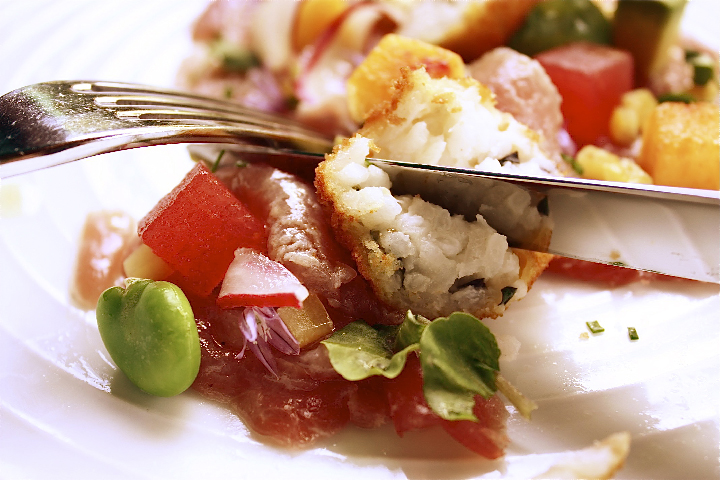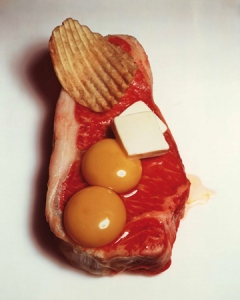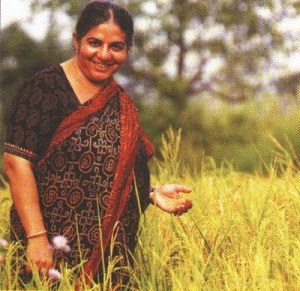Dish of the Week:
Bellwether Farms' San Andreas and Ripe Summer Figs
 If you’ve ever traveled through France, Italy, Spain or down into the Mediterranean basin in summer, chances are you’ve eaten at least one meal that included ripe figs and a hunk of local cheese. It’s a classic pairing which has been with us since antiquity. And while a lot has changed when it comes to the finesse we bring to artisan cheesemaking since Plato hung out talking about the notion of an Ideal Universe, the elements which make figs and cheese an indelible pairing remains hard to beat. We all know cheese is great with apples, pears and quince, but only figs, the earthiest of biblical fruits, has the dark sugar and beguiling sensual texture (all those tiny seeds popping on the palate) to stand up and fully embrace the grassy, salty, acidic nature of cheese.
If you’ve ever traveled through France, Italy, Spain or down into the Mediterranean basin in summer, chances are you’ve eaten at least one meal that included ripe figs and a hunk of local cheese. It’s a classic pairing which has been with us since antiquity. And while a lot has changed when it comes to the finesse we bring to artisan cheesemaking since Plato hung out talking about the notion of an Ideal Universe, the elements which make figs and cheese an indelible pairing remains hard to beat. We all know cheese is great with apples, pears and quince, but only figs, the earthiest of biblical fruits, has the dark sugar and beguiling sensual texture (all those tiny seeds popping on the palate) to stand up and fully embrace the grassy, salty, acidic nature of cheese.
 Not a lot of people know that Bellwether Farms was California’s original sheep dairy. This family-run farm brings a level of passion and commitment to their cheese and yogurt program that is truly rare. The story goes that when Cindy Callahan first brought sheep to the ranch she and her husband owned a few miles from the ocean, she had only a vague notion of what to do with them. After a trip to Italy in 1992 they began to age their sheep milk, producing their first Pecorino, but it wasn’t until son Liam came onboard that the family began in earnest to experiment with ways to control moisture and acidity which led them to the considerable success they enjoy today. Bellwether produces award winning sheep, cow and goat cheese that consistently exhibits remarkable complexity of flavor that is unique to their location. We hear a lot of talk about terrior when it comes to wine, but unlike almost any other artisanal product, cheese like Bellwether's truly expresses the taste of milk from animals that are born, raised and grazed in a specific location, in this case the beautiful rolling hills of the Sonoma County Coast only a few miles from the ocean where mild temperatures and coastal fog produce some of the richest and sweetest milk in the land.
Not a lot of people know that Bellwether Farms was California’s original sheep dairy. This family-run farm brings a level of passion and commitment to their cheese and yogurt program that is truly rare. The story goes that when Cindy Callahan first brought sheep to the ranch she and her husband owned a few miles from the ocean, she had only a vague notion of what to do with them. After a trip to Italy in 1992 they began to age their sheep milk, producing their first Pecorino, but it wasn’t until son Liam came onboard that the family began in earnest to experiment with ways to control moisture and acidity which led them to the considerable success they enjoy today. Bellwether produces award winning sheep, cow and goat cheese that consistently exhibits remarkable complexity of flavor that is unique to their location. We hear a lot of talk about terrior when it comes to wine, but unlike almost any other artisanal product, cheese like Bellwether's truly expresses the taste of milk from animals that are born, raised and grazed in a specific location, in this case the beautiful rolling hills of the Sonoma County Coast only a few miles from the ocean where mild temperatures and coastal fog produce some of the richest and sweetest milk in the land.
 Sheep's milk is higher in fat and protein than either cow or goat’s milk, important when you consider that during cheesemaking much of the water is drained from milk with most of the fat and protein staying in the curds. San Andreas is a raw sheep milk farmstead cheese unique to Bellwether Farm. It has the marvelous nutty flavor and soft underlying bite of a good cheddar, but is unusually smooth and full-flavored.
Sheep's milk is higher in fat and protein than either cow or goat’s milk, important when you consider that during cheesemaking much of the water is drained from milk with most of the fat and protein staying in the curds. San Andreas is a raw sheep milk farmstead cheese unique to Bellwether Farm. It has the marvelous nutty flavor and soft underlying bite of a good cheddar, but is unusually smooth and full-flavored.
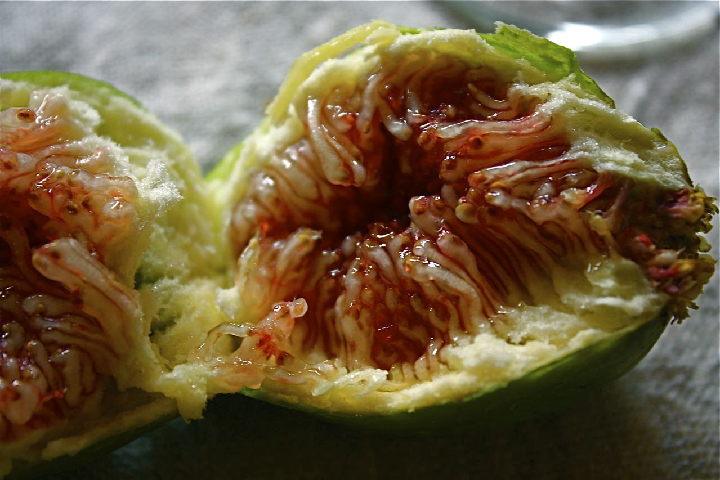 Last week we featured Bellwether's San Andreas with nothing more than a plate of ripe Black Mission Figs, deeply caramelized walnuts, a few shavings of radish and a sprinkling of Calendula flowers. Now that our own green Napoli figs are finally coming in on the Ridge, (see below) we will offer them while they last. Gray Kuntz has famously described cheese as a taste that pushes, as opposed to pulls, which may explain in part why cheese and figs, with their juicy, sweet mesmeric power, make such a good marriage. As for that other artisanal product that's only gotten better since antiquity...happily, we've got plenty of that around as well at Barndiva, by the glass or bottle. Want to talk about an ideal universe? This is a good start.
Last week we featured Bellwether's San Andreas with nothing more than a plate of ripe Black Mission Figs, deeply caramelized walnuts, a few shavings of radish and a sprinkling of Calendula flowers. Now that our own green Napoli figs are finally coming in on the Ridge, (see below) we will offer them while they last. Gray Kuntz has famously described cheese as a taste that pushes, as opposed to pulls, which may explain in part why cheese and figs, with their juicy, sweet mesmeric power, make such a good marriage. As for that other artisanal product that's only gotten better since antiquity...happily, we've got plenty of that around as well at Barndiva, by the glass or bottle. Want to talk about an ideal universe? This is a good start.
Harvest On the Ridge
 While what we grow on the Ridge hardly puts a dent in the amount of produce Barndiva needs, every year we try to up our game and grow a bit more in hopes of closing the circle of sustainable supply and demand as much as we can. So despite the late frost which knocked out almost all our stone fruit this year, I was pretty proud at the variety of fruit and veg we were able to start harvesting for the restaurant on Tuesday morning, starting with a bumper crop of green and red Gravenstein Apples. I thought it might be fun to document some of what Vidal and I picked before the fog lifted and the third member of our picking team managed to haul her butt out of bed.
While what we grow on the Ridge hardly puts a dent in the amount of produce Barndiva needs, every year we try to up our game and grow a bit more in hopes of closing the circle of sustainable supply and demand as much as we can. So despite the late frost which knocked out almost all our stone fruit this year, I was pretty proud at the variety of fruit and veg we were able to start harvesting for the restaurant on Tuesday morning, starting with a bumper crop of green and red Gravenstein Apples. I thought it might be fun to document some of what Vidal and I picked before the fog lifted and the third member of our picking team managed to haul her butt out of bed.
Sadly, with the exception of the cherry toms, the bulk of our Heirloom Tomato crop (33 varieties from Mix Garden) is still hanging green on the vines, waiting for it to get over 55 at night, which Bonnie Z says is the magic number. (According to Bonnie, once upon a time she would start harvesting tomatoes at Dragonfly in early June!) Looking on the bright side, in addition to the Gravs, Vidal and I managed to pick five cases of incredible green figs, string beans, three varieties of squash, cucumbers, radishes, basil, thyme, lavender, rosemary and the first of the slicing tomatoes. Not bad for a morning's work, especially considering Lukka and Daniel haven't started to harvest anything from their new patch in the pear orchards. Next week it looks like we will have Asian Pears, which Vidal grafted only a year ago, along with Victoria's red pears, and the first of our melons. Fingers crossed about those tomatoes.
To read more about the extraordinary history of the farm: At the End of the Day, May 26, 2011
In the News
 We were especially pleased the Gravensteins came in this week just in time for us to participate once again in Slow Food Russian River's Gravenstein Apple Presidia Project, which the indomitable Paula Shatkin reminds us needs full community participation if we hope to keep the Gravenstein, a unique Sonoma County heritage, alive. For the next few weeks we encourage you to check out the restaurants in Sonoma County who are participating in the Presidia by putting Grav-centric dishes on their menus. At the very least buy some Gravs at your farmer's market and bake a pie. No excuses, do your part! Save the Gravenstein apple!
We were especially pleased the Gravensteins came in this week just in time for us to participate once again in Slow Food Russian River's Gravenstein Apple Presidia Project, which the indomitable Paula Shatkin reminds us needs full community participation if we hope to keep the Gravenstein, a unique Sonoma County heritage, alive. For the next few weeks we encourage you to check out the restaurants in Sonoma County who are participating in the Presidia by putting Grav-centric dishes on their menus. At the very least buy some Gravs at your farmer's market and bake a pie. No excuses, do your part! Save the Gravenstein apple!
For more information go to Slow Food.
And finally, in case you missed it, some very good news from Eastern Europe.
Hungary destroys All Monsanto Corn Fields
All text Jil Hales. All photos Jil Hales (unless otherwise noted)












